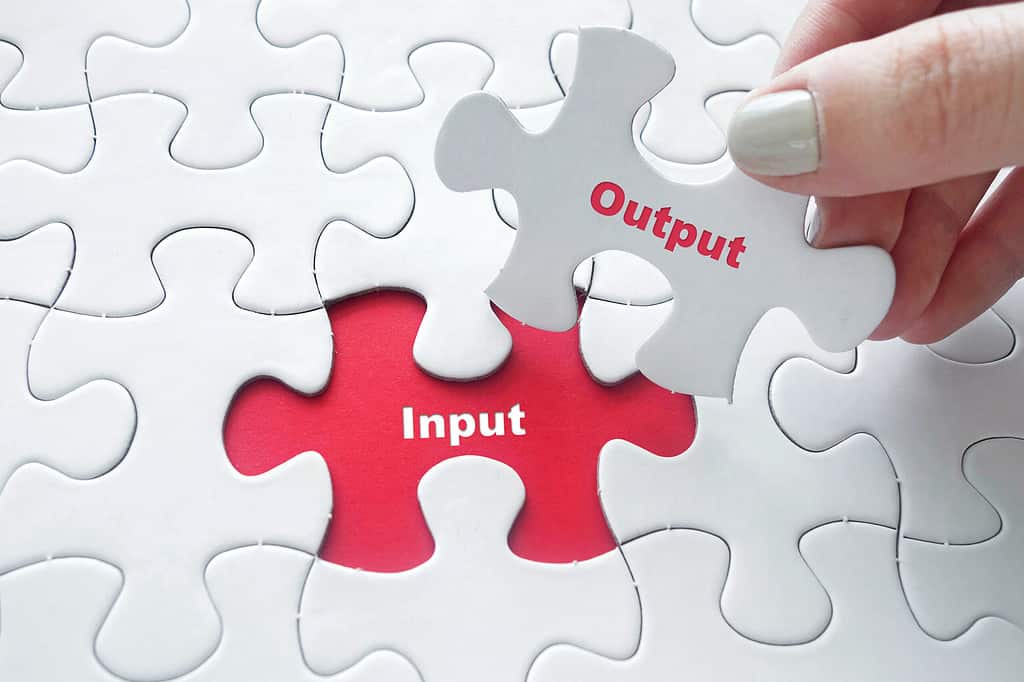Category: Concepts

Optimization: Key to Reducing Waste and Improving Quality
Updated:Nothing is perfect, but almost everything can be made better. That’s the basic philosophy behind any optimization strategy. Optimizing is an activity that businesses pursue when they are generally satisfied with the entry criteria and scope of a particular process, but want to further improve the efficiency or reduce output variability. Overview: What is optimization? […]
Read more »
Understanding Output: The Key to Achieving Desired Results
Updated:When you work on a process, there is always a result. These results can be broken down into outputs and outcomes. Whatever you put into your work results in the degree of your output. Your output is dependent on the strength of your input, so it is vitally important to choose the right inputs that […]
Read more »
Procedures: The Key to Consistency in Business
Updated:There are all kinds of procedures for the many things that people do every single day. Every family household has procedures for basic tasks like putting dishes away, assembling for dinner or getting into the car. Likewise, every place of business has procedures for the essential activities they do on a regular basis. Overview: What […]
Read more »
OSHA: Ensuring Safe and Healthy Work Environments
Updated:Many organizations claim that safety is Job #1. The Occupational Safety and Health Administration is an agency in the U.S. Department of Labor which is responsible for ensuring that companies provide safe and healthy work environments for their employees. OSHA stands for Occupational Safety and Health Administration. It is a federal agency of the United […]
Read more »
Step-by-Step Guide to Project Selection
Updated:The purpose of Lean Six Sigma is to identify opportunities for improving organizational processes. One of the challenges is the selection of projects for improvement teams to work on. Let’s learn more about how to select impactful projects. Both Lean and Six Sigma projects are used to improve organizational processes. Improvement teams are formed. DMAIC […]
Read more »
Noise
Published:For any process you collect data on, there will be a signal and some noise. Unfortunately, if the noise is loud enough, it will drown out your signal. Let’s see what we mean by noise and how we can mitigate its impact.
Read more »
How to Use the P-Value to Evaluate Your Data and Draw Conclusions
Updated:Is there a real difference between machines? Did what I changed really help? Does a relationship really exist between temperature and pressure? The answers to these questions and others can be provided by the p-value.
Read more »
Maximizing Efficiency with Operation Cost Targets
Updated:In business, it is vital to have a firm grasp on the maximum amount of expenditures a project can allow. This can mean the difference between being profitable or falling into the red. For every project you undertake that requires funds, you need to know how much you can comfortably spend on it. Beyond that, […]
Read more »
Prevention Cost
Published:Lean Six Sigma prevention cost analysis (PCA) is an important tool that can help businesses prevent costly mistakes and improve their bottom line.
Read more »
Assessing Process Performance: The Value of Establishing Baselines
Updated:How do you know if your diet is working? You need to start with a baseline and then measure change from that. You should do the same for all your processes. From that process baseline, you can know whether your process is getting better, worse, or not changing. The term “process baseline” typically refers to […]
Read more »
The Crucial Role of Primary Metrics in Validating Six Sigma Improvements
Updated:The primary metric is a numeric output used to understand your process. It makes the process objective, setting the stage for successful improvements that align with the organization’s strategic goals.
Read more »
The Significance of OEM in Product Manufacturing
Updated:When you want to replace a part in your car, you should ask whether it is OEM or aftermarket. OEM parts will be the same as the part you are replacing. An aftermarket part may be similar but will not be from the same manufacturer or supplier who originally provided the part. Does it matter? […]
Read more »
Ordinal Data
Published:If you have categorical or descriptive data that has a natural order, sequence, or preference, it would be defined as ordinal data. Since ordinal data is one of four common types of data, you should understand what it is and how you can use it.
Read more »
Promoting Quality and Customer Service through Process Ownership
Updated:When individuals take ownership, they are more likely to be invested in its success and to work tirelessly to ensure that it runs efficiently, meets its goals, and continuously improves over time. So how can this concept be used in process improvement? Lean Six Sigma is a business improvement methodology used to improve processes and […]
Read more »
One Piece Flow
Published:Companies love their batch flow processes. But, a one-piece flow might be a more efficient approach to producing your products. Let’s learn a bit more about one-piece flow.
Read more »
Find Out How and Why to Avoid The O’Brien Effect
Updated:If you have worked in customer service long enough, you have likely had that one co-worker that talks way too much to customers, making suggestions that end up creating more work for co-workers regardless of the initial needs of the client. Overview: What is the O’Brien Effect? The O’Brien Effect refers to the waste that […]
Read more »
Using Paired T-Tests for Controlled Analysis
Updated:A paired t-test is a form of a two-sample t-test used in hypothesis testing. It is useful for answering questions about any significant differences for before and after comparisons.
Read more »
Operational Cost
Published:Running a business involves all kinds of expenses. Rent, materials, labor and just keeping the power on all take money, and these costs add up to your total operational expenditures.
Read more »
Mastering Positive Correlation Analysis: Tools and Techniques
Updated:Correlation is a statistical term of the relationship between two variables. You can have a negative correlation, positive correlation, or no correlation. Let’s see what a positive correlation is all about.
Read more »
Process Failure Modes Effects Analysis (PFMEA)
Published:Complex processes increase the likelihood of error states occurring. Scrap, defects, unnecessary work in progress, and warranty are all expensive. We’ll show you the benefits of adopting the process failure mode and effects analysis approach for your business.
Read more »
Maximize Your Project Management Potential with PMP Certification
Updated:Widely recognized as one of the most prestigious certifications in the industry, PMP validates your knowledge and experience in project management, opening up new opportunities for career advancement and higher salaries. Overview: What is Project Management Professional (PMP) Project Management Professional (PMP) is a globally recognized professional certification that is granted by the Project Management […]
Read more »
Objective Evidence
Published:Objective evidence is factual, unbiased data that can be observed and measured. Let’s explore its importance in your Six Sigma practices.
Read more »
Production Part Approval Process (PPAP)
Published:The supply of components into high-value manufacturing industries is fiercely competitive, and there is no place for poor quality. Unexpected defects mean lost business and reputational damage. By following the Production Part Approval Process, you can lock in quality and hit those customer requirements every time.
Read more »
Common Non-Parametric Tests and Their Applications
Updated:Several statistical tests have underlying assumptions of a specific type of distribution which is required for the test results to be valid. But what if your data distribution does not meet that assumption? A non-parametric test might help. There are several hypothesis tests which assume your data has a specific distribution. For example, a 2-sample […]
Read more »